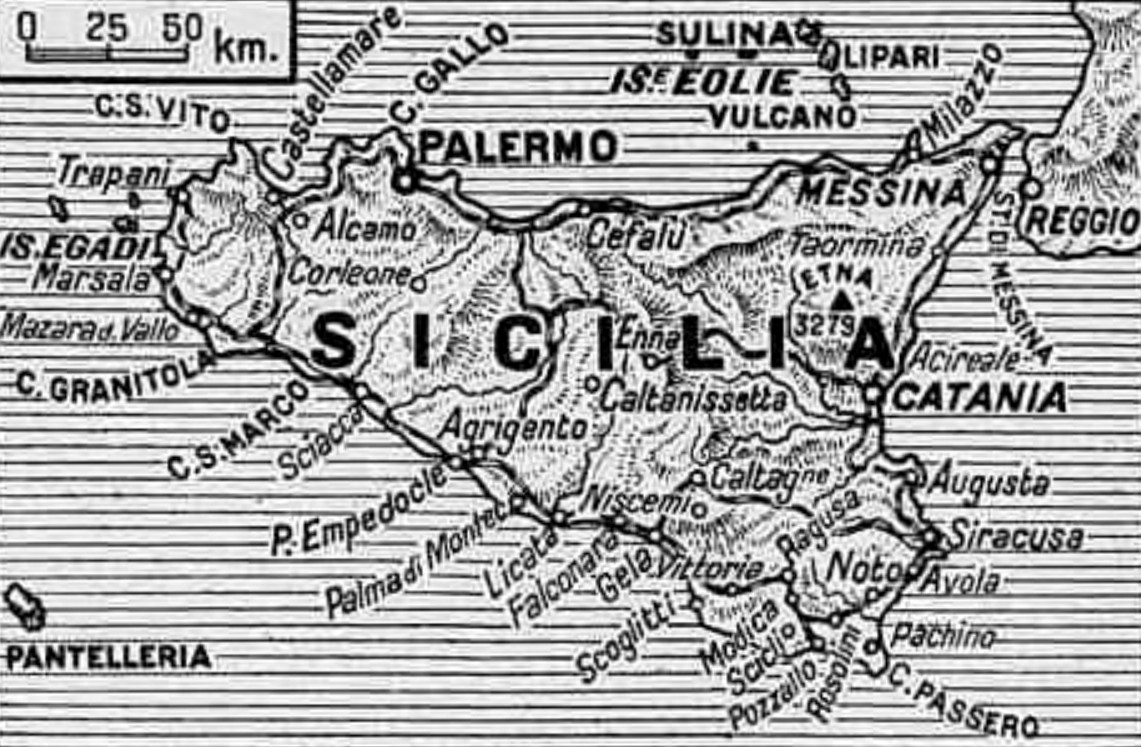La Stampa (July 19, 1943)
Battaglia sempre più dura in Sicilia
Navi da guerra e mercantili attaccate con successo da reparti aerei dell’Asse – Un sommergibile e un grosso piroscafo affondati da una nostra torpediniera e da aerosiluranti – 18 bombardieri nemici abbattuti durante un’incursione su Napoli

Il Quartier Generale delle Forze Armate ha diramato nel pomeriggio di ieri il seguente Bollettino N. 1149:
La violenza della lotta è ancora aumentata intorno ad Agrigento sotto l’urto di preponderanti forze blindate. Le truppe, che in questi giorni avevano valorosamente difeso la città, sono state costrette a ripiegare su posizioni più arretrate.
Ad oriente della Sicilia, reparti aerei dell’Asse hanno agito anche ieri con successo, colpendo con siluri e con bombe navi mercantili e da guerra di vario tonnellaggio. Sei velivoli sono stati distrutti da cacciatori tedeschi.
Unità navali avversarie bombardavano a più riprese la città di Catania: il fuoco delle batterie terrestri colpiva un incrociatore e incendiava un cacciatorpediniere.
Napoli è stata nuovamente e ripetutamente attaccata da grosse formazioni di quadrimotori: sono segnalati ingenti danni nei quartieri centrali e periferici; in corso di accertamento le vittime. La difesa contraerea della città, con interventi pronti a precisi, abbatteva dieci bombardieri; altri otto precipitavano a seguito di combattimenti con la nostra caccia. Minori azioni di spezzonamento e di mitragliamento sono state effettuate, questa notte sui dintorni di Napoli, su Littoria e su Ciampino.
Durante le incursioni di cui hanno dato notizia i bollettini n. 1147 e 1148, risultano distrutti, oltre a quelli già indicati, quattro velivoli, di cui uno caduto a sudovest di Ivrea, e tre nel territorio di Genova, sotto il tiro delle artiglierie locali.
Negli ultimi due giorni non sono rientrati alle basi cinque nostri aerei.
Motosiluranti italiane in ricognizione offensiva nelle acque della Sicilia orientale, colavano a picco un piroscafo da 9 mila tonnellate.
Un sommergibile è stato affondato in Mediterraneo dalla torpediniera comandata dal capitano di corvetta Silvio Cava, da Boissano (Savona).
Le perdite finora accertate tra le popolazioni civili a seguito delle incursioni citate dai bollettini nr. 1148 e 1149 sono le seguenti: a Reggio Emilia, 6 morti e 20 feriti; a Napoli, 12 morti e 83 feriti; a Nola, 9 morti e 12 feriti; ad Afragola, 4 morti e 10 feriti; a Roccarainola, 10 morti e 10 feriti.